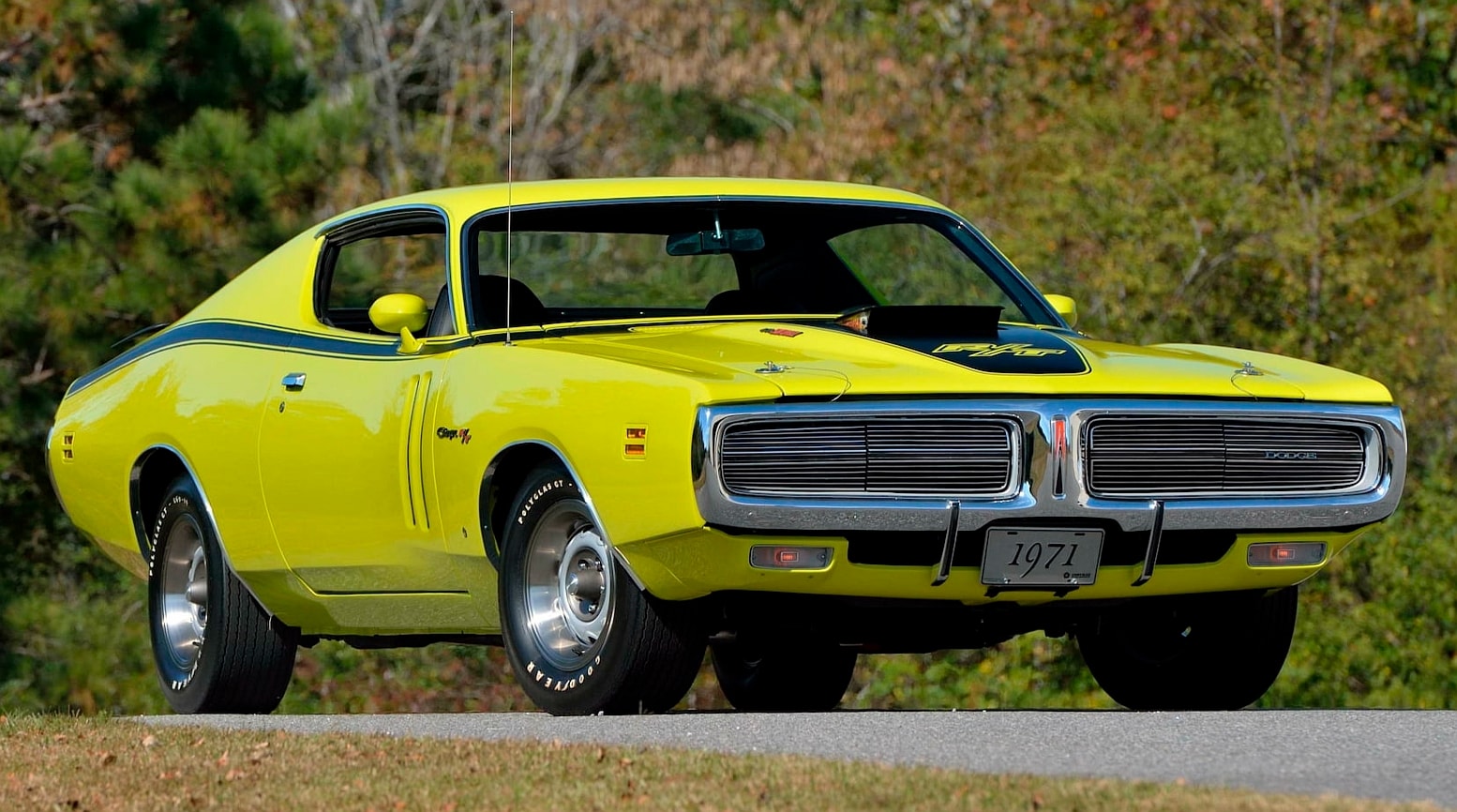1971 Dodge Charger R/T: The Brawler With a Backbone
If the late ‘60s and early ‘70s were a bar fight, the 1971 Dodge Charger R/T didn’t just walk in swinging—it owned the place. A brute wrapped in steel and swagger, this car was born at the peak of the muscle era and hit the streets with a blend of style, speed, and street-fighting attitude that still slaps today.
While the 1968–70 Chargers get most of the limelight thanks to Hollywood and “The Dukes of Hazzard,” the ’71 Charger R/T is the dark horse—the one that looks meaner, handles tighter, and brings an underdog charm collectors are finally waking up to.
Let’s break down why this coke-bottle bruiser should absolutely be in your garage.
A Face That Means Business
Dodge took a design risk in ‘71, and boy did it pay off. The new Charger R/T had:
Loop front bumper with an inset grille that gave it a predatory look
Coke-bottle curves that flared at the hips like a linebacker in motion
A power bulge hood, hidden headlights, and a tail that looked like it could crack concrete
Paint it Plum Crazy Purple, Hemi Orange, or Citron Yella, throw on some R/T badging, and you’ve got a rolling declaration of war.
This wasn’t just a muscle car—it was a muscle sculpture. Every angle whispered, “Try me.”
Performance With a Capital P
The ‘71 Charger R/T didn’t mess around under the hood. It came standard with a 370-horsepower 440 Magnum, which already shoved you deep into your seat. But Dodge, being Dodge, offered more.
Engine Options:
440 Six-Pack – Three 2-barrel carbs, 390 hp, and torque for days.
426 HEMI – The nuclear option. 425 hp, 490 lb-ft of torque, and 0-60 in about 5.5 seconds. Only 63 HEMI R/Ts were built that year, making them white whales of the Mopar world.
Every engine sounded like Judgment Day, and the Torqueflite 727 auto or 4-speed manual kept the power flowing smooth or savage, depending on your mood.
Better Handling, Real Bite
Compared to the slab-sided ‘68-’70s, the 1971 R/T was more than just a straight-line screamer.
Chrysler’s new “fuselage” unibody improved rigidity.
Torsion-bar front suspension and rear leafs gave it a planted, balanced ride.
The R/T package added heavy-duty shocks, sway bars, and performance gearing.
It felt tight. Responsive. Like it wanted to wrestle corners, not just burn rubber.
Interior Swagger: Jet Age Cool
Slide inside, and it’s pure Mopar theater:
Deep-set gauges, like you’re piloting a bomber
Pistol Grip shifter (manual models), angled like a revolver
Optional high-back bucket seats, woodgrain trim, and rally dash
It was cozy, menacing, and wild—a perfect match for the road warrior it was built to be.
Rarity and Rising Value
The R/T badge meant something in 1971—it meant you didn’t settle.
Only about 3,118 R/Ts were built that year. Far fewer survive today in unmolested condition. Add in:
Limited production numbers
Factory 440 Six-Pack or HEMI engines
Desirable color combos and options
And you’ve got a high-value collector car that’s climbing faster than a tach at a green light.
Why It Belongs in Your Collection
Let’s be clear: the 1971 Dodge Charger R/T is not a background player. It’s a lead role, a garage star, and a thrill to drive.
Why you need one:
✅ It’s rare, raw, and ridiculously cool
✅ It’s the last Charger R/T before the muscle collapse
✅ It offers Mopar madness with more curves and better handling than earlier models
✅ It still intimidates modern muscle cars with its looks and sound alone
✅ It was born to be driven—and admired
Final Verdict: A Purebred Bruiser With Serious Muscle Pedigree
The 1971 Charger R/T doesn’t just earn your respect—it demands it. It’s the last real R/T before emissions and insurance choked the fun out of everything, and it’s still a blast to drive 50 years later.
So if you’re building a dream garage and you don’t have this blunt-force beauty on the list, you’re missing a key piece of muscle car greatness.
Because when that 440 roars to life and the hood bulge rises before you, you’ll remember what driving was always meant to be: loud, fast, and unapologetically badass.

